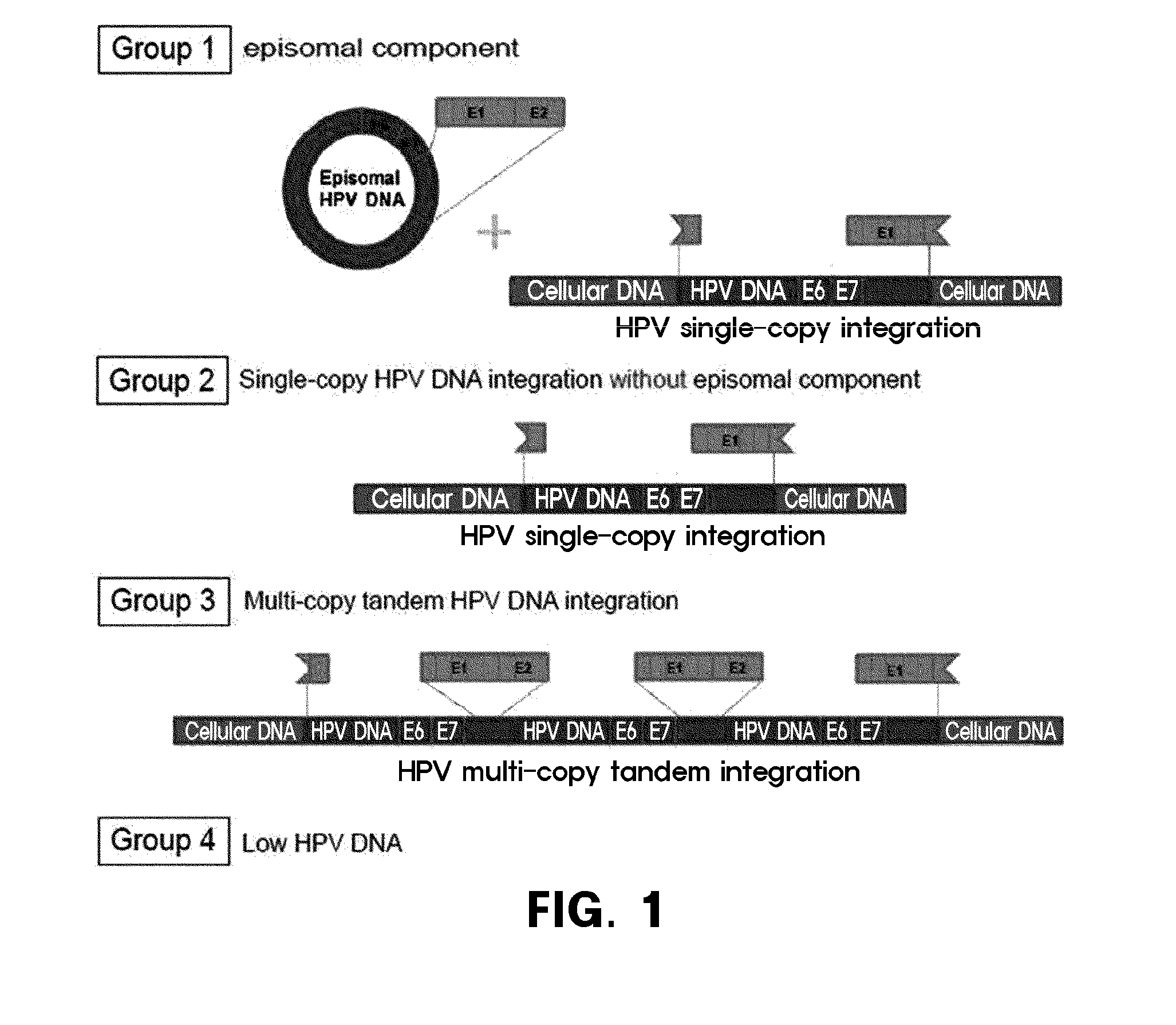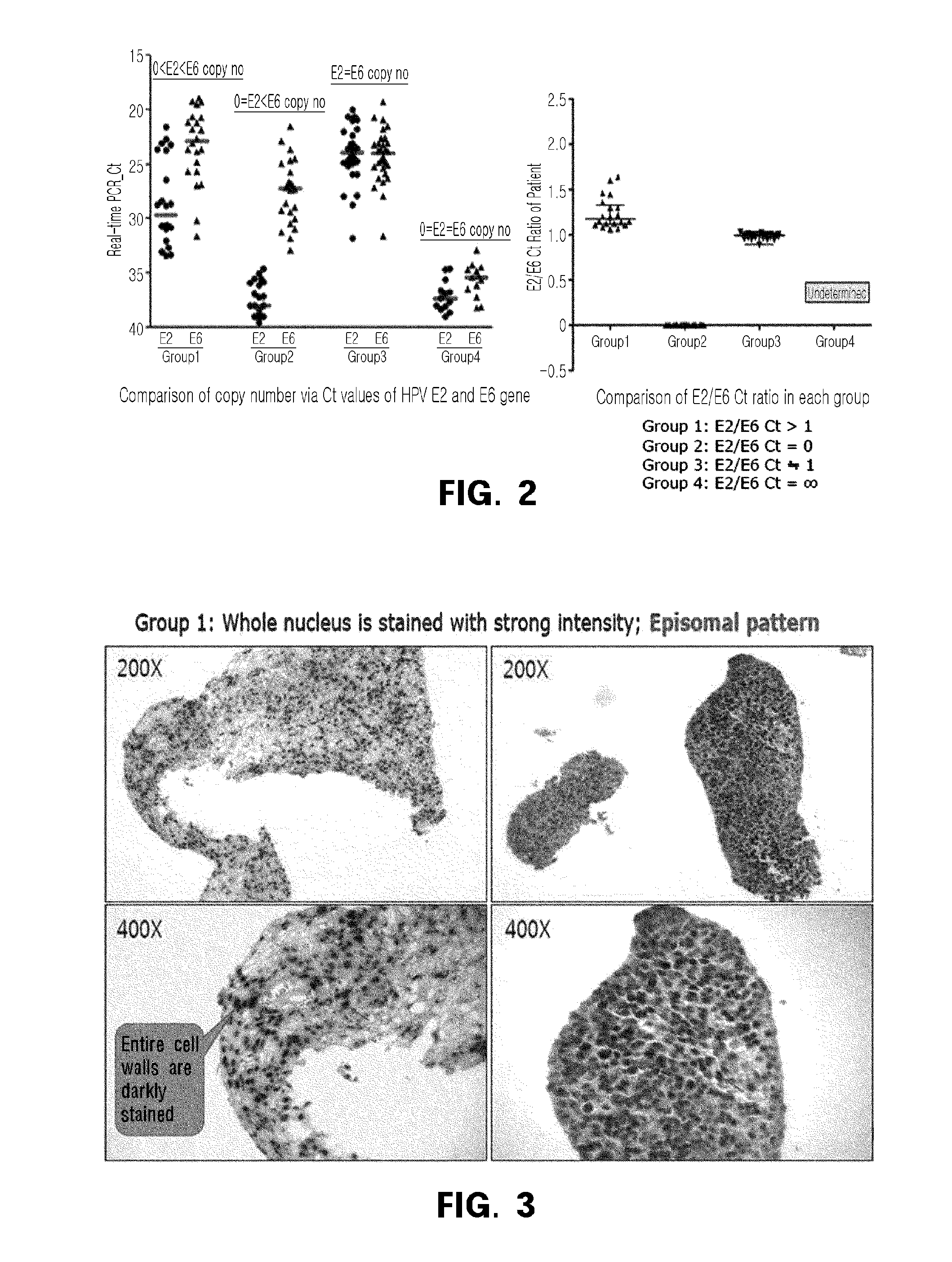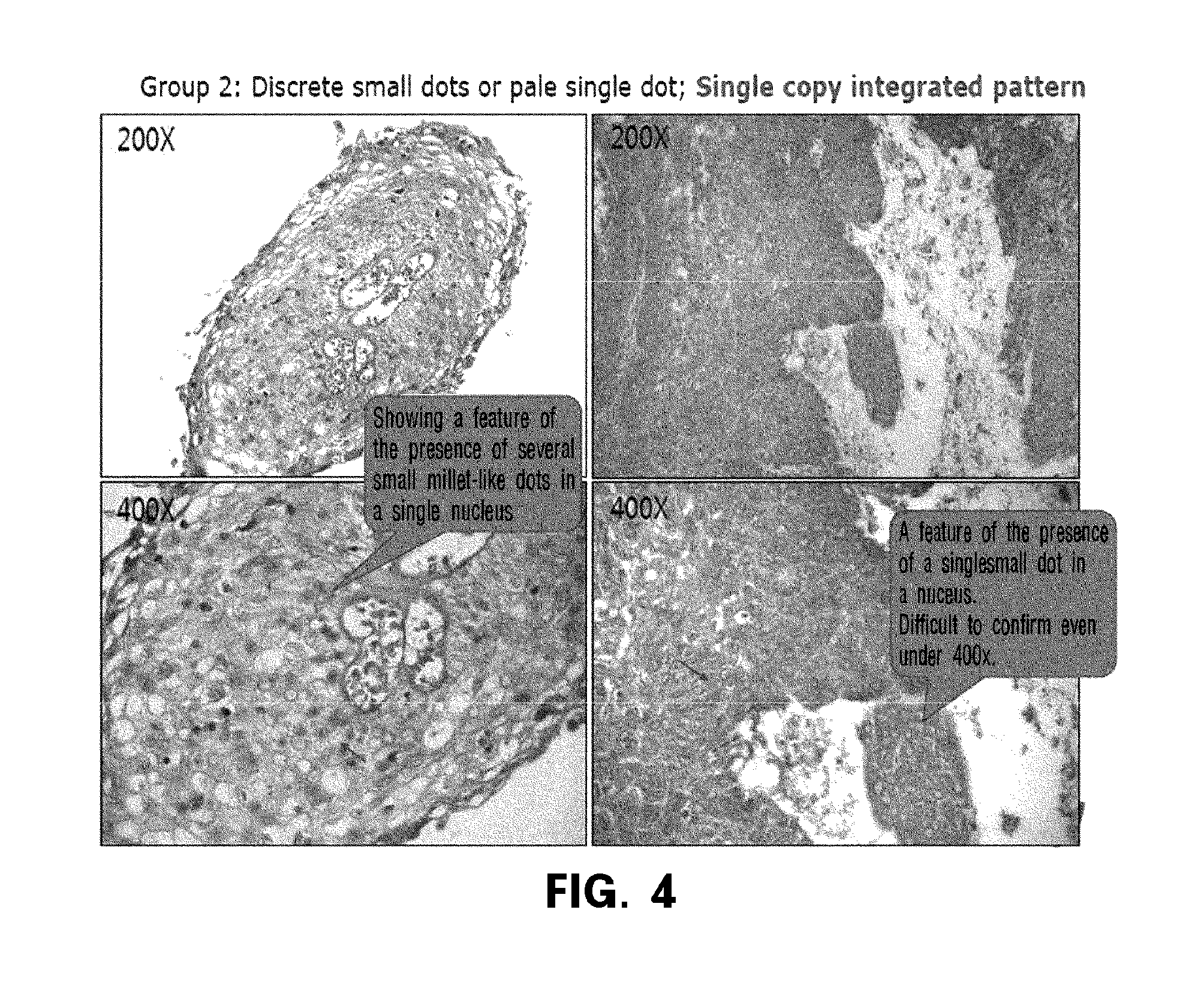Method for prediction of prognosis by human papillomavirus DNA integration pattern
a human papillomavirus and integration pattern technology, applied in the field of analyzing the prognosis of cervical cancer according to human papillomavirus (hpv) integration pattern, can solve the problems of difficult to observe the presence ratio of each form, lack of hpv integration pattern and lack of accuracy of differentiation between tumors, etc., to achieve accurate analysis, reduce complications, and improve the effect of survival
- Summary
- Abstract
- Description
- Claims
- Application Information
AI Technical Summary
Benefits of technology
Problems solved by technology
Method used
Image
Examples
example 1
Observation of Integration Form of Human Papillomavirus DNA by In Situ Hybridization Method
[0102]In the present invention, for the observation of the human papillomavirus DNA integration patterns by in situ hybridization (“ISH”, hereinafter) method, the tumor tissues obtained from 80 cervical cancer patients who received curative radiotherapy with or without in combination with a chemotherapy in the National Cancer Center (Korea) were observed.
[0103]First, the isolated tissues were prepared into samples of formalin-fixed, paraffin-embedded (FFPE) blocks, sliced into a size of 3 μm thickness and attached onto a slide-glass coated with fresh silane III.
[0104]Then, the samples with an episomal pattern and those with an integration pattern were detected using a commercially available HPV ISH system (Ventana Inform HPV, Tucson, Ariz., USA). To be brief, the detection of high risk HPV ISH was performed using BenchMark™, automated slide staining system (Ventana Medical Systems), iView Blue...
example 2
Observation of Integration Form of Human Papillomavirus DNA by PCR Method
[0108]In the present invention, the integration pattern of the human papillomavirus DNA was observed in the tumor tissues of 80 cervical cancer patients of Example 1, in the same manner as in the previous study (Shin, H. J. et al., PLoS One, 9:e78995, 2014).
[0109]The DNA extraction, DNA amplification, and genotyping were performed in the same manner as reported previously (Kim J Y et al., J Clin Oncol., 27:5088, 2009), and the real-time PCR was performed using ABI Prism 7900HT System and TaqMan Universal PCR Master Mix (PE Applied Biosystems, Perkin-Elmer, Foster City, Calif.).
[0110]Primers and probes were designed so that E2 hinge regions and E6 gene (Peitsaro P et al., J Clin Microbiol., 40:886, 2002.), which are known to be most frequently destroyed during the progress of virus integration, can be specifically amplified (Table 1), and synthesized by Applied Biosystems® Life technologies (ABI).
TABLE 1Primers ...
example 3
Analysis of Human Papillomavirus DNA Integration Patterns According to ISH Method and qPCR Method
[0114]In order to compare the accuracy of the human papillomavirus DNA integration patterns according to the ISH method and the qPCR method, the groups of human papillomavirus DNA integration patterns classified according to the result observed by the ISH method of Example 1 and the groups of human papillomavirus DNA integration patterns classified according to the result observed by the qPCR method of Example 2 were compared.
[0115]As a result, as shown in FIG. 7B, it was confirmed that there was a big difference between the PCR method and the ISH method. In particular, when the patient group corresponding to group 1 classified by the PCR method was re-classified by the ISH method, it was confirmed that group 1 had 48%, group 2 had 9%, and group 3 had 43%, whereas the patient group corresponding to group 3 classified by the PCR method was re-classified by the ISH method, it was confirmed...
PUM
| Property | Measurement | Unit |
|---|---|---|
| size | aaaaa | aaaaa |
| frequency | aaaaa | aaaaa |
| size | aaaaa | aaaaa |
Abstract
Description
Claims
Application Information
 Login to View More
Login to View More - R&D
- Intellectual Property
- Life Sciences
- Materials
- Tech Scout
- Unparalleled Data Quality
- Higher Quality Content
- 60% Fewer Hallucinations
Browse by: Latest US Patents, China's latest patents, Technical Efficacy Thesaurus, Application Domain, Technology Topic, Popular Technical Reports.
© 2025 PatSnap. All rights reserved.Legal|Privacy policy|Modern Slavery Act Transparency Statement|Sitemap|About US| Contact US: help@patsnap.com



